When my colleague heard I would be visiting Iwakuni, she urged me to try the ice cream. There’s hundreds to choose from, she explained, including weird ones, like tomato. And sure enough, after crossing Kintaikyo, we were met with a variety of ice cream shops displaying their wares in true sampuru style. Judging by the number of plastic models, there was, indeed, a huge offering of flavors. The same area is also dotted with restaurants and souvenir shops, unofficially marking the entrance to Kikko Park.
Located between Kintaikyo and Iwakuni Castle, Kikko-koen is one of Japan’s 100 Historical Parks. The grounds were the former residence of the domain lords who ruled Iwakuni during the Edo Period. And so, the park contains a number of historical buildings, as well as trees, flowers, and ponds. It’s also home to the Kinunkaku Pavilion, a registered Tangible Cultural Property of Iwakuni City, and several museums.
I’d heard about the prevalence of white snakes in the area and so was curious to check out the Iwakuni Shirohebi Museum. It’s right across from the Ropeway that takes you up and down Mount Shiroyama, so we headed there after visiting the castle. The museum is surprisingly small, made up of just two rooms, but very interesting nonetheless. It also has a small shop where you can buy original snake-related merch. Just be aware that there are real snakes on view, so it’s definitely not for the ophidiophobic.
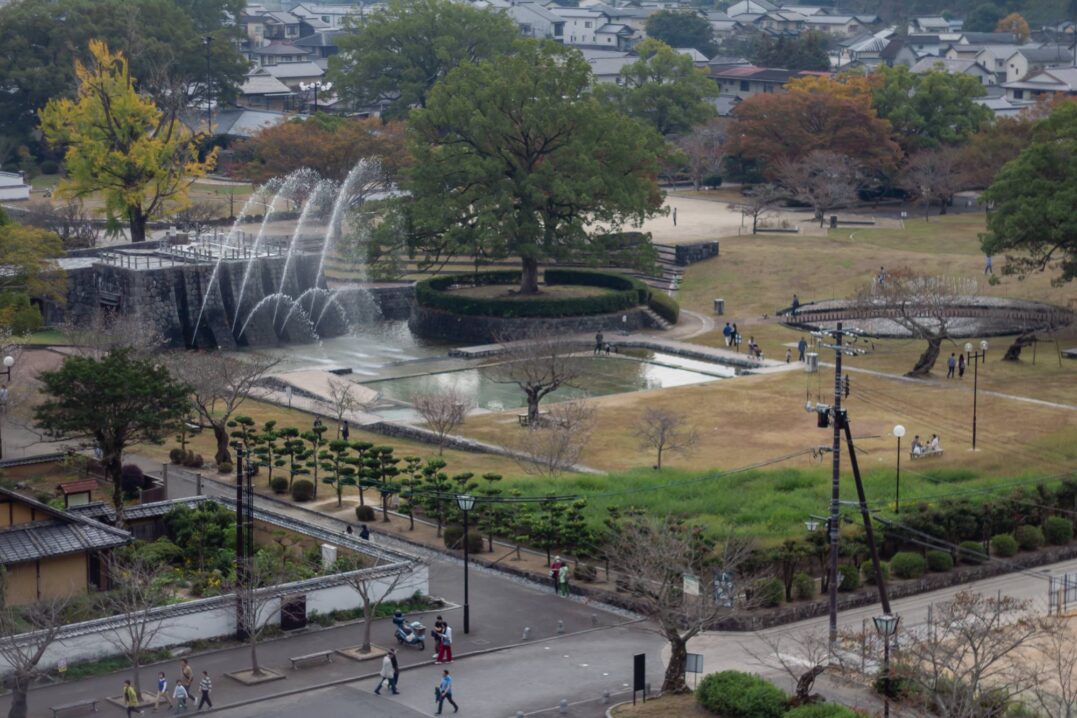
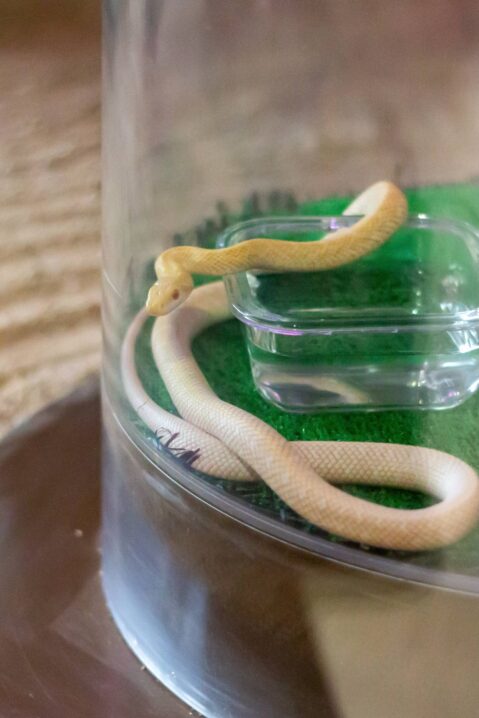
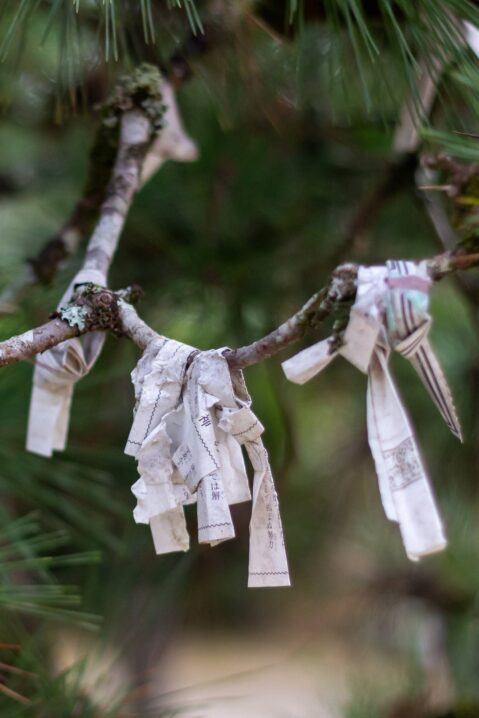
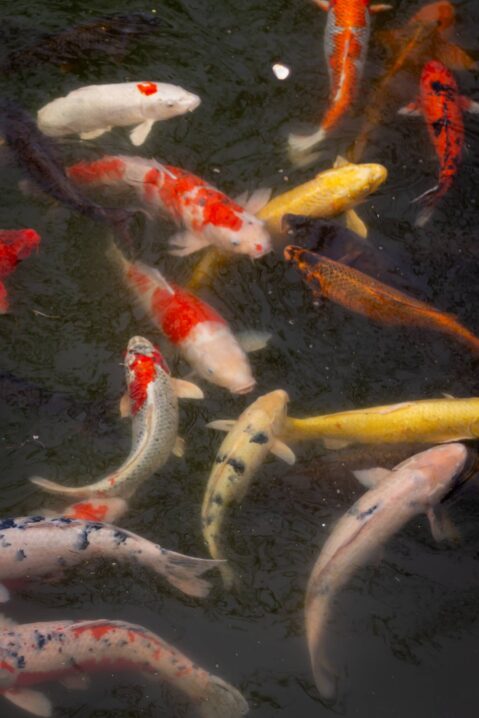
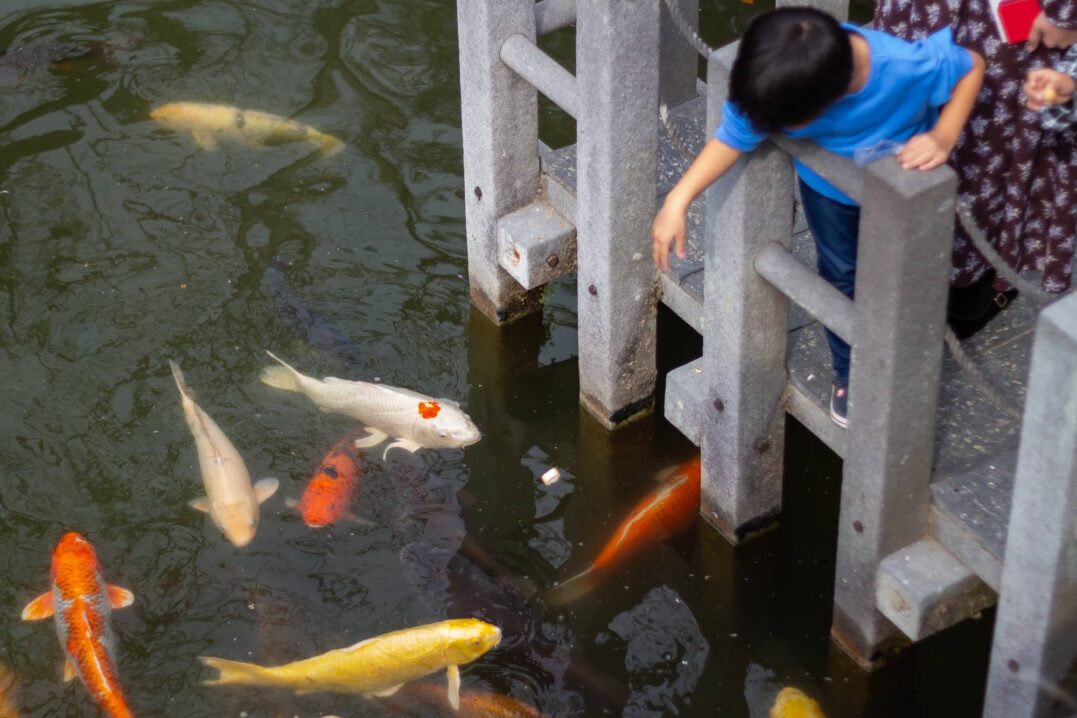
Iwakuni white snakes, as it turns out, are essentially just albino rat snakes. They’re covered with white scales, have ruby eyes, and grow up to 1.8 m (5.9 ft) in length. Although usually rare, these snakes have been found in Iwakuni since ancient times. No one really knows why here specifically, but in Shintoism, they are revered as “messengers of the gods.” Encountering one is believed to bring you good luck, especially with money.
Iwakuni white snakes are apparently quite shy, and, since they are also non-venomous, don’t pose any threat to humans. In 1972, they were designated a Natural Treasure by the Government of Japan. Since then, Iwakuni City has worked to protect these mysterious creatures by preserving their habitat and educating visitors about them. It’s also illegal to capture them in the wild.
The Kinunkaku Pavilion is right near the snake museum, so we headed in that direction next. You can access it directly from Kikko Shrine, or just admire it from the street. Built in 1885, the Pavilion is an emado, a building that displays ema, or picture tablets, dedicated to the shrine.
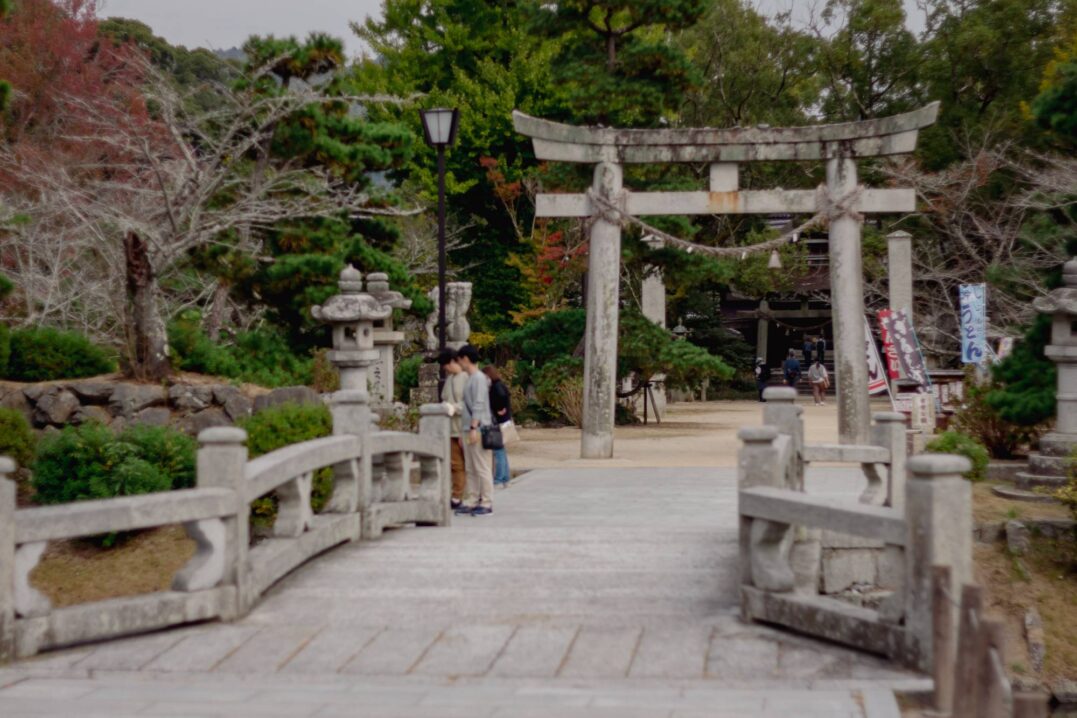
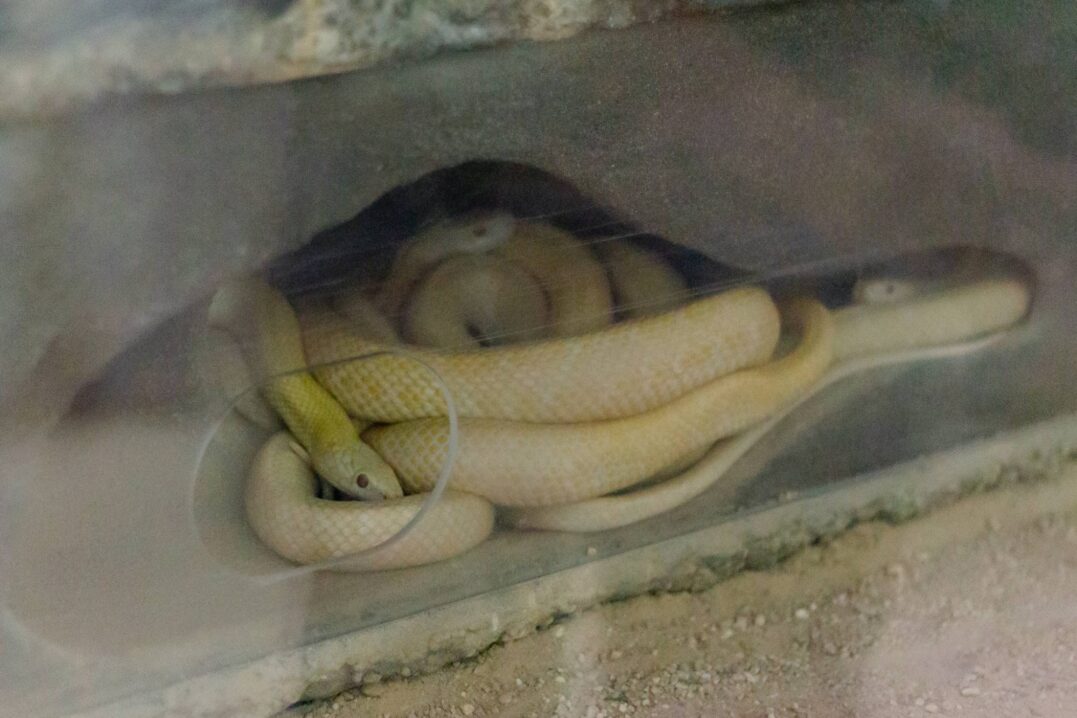
While no valuable ema have survived, the Pavilion does have a painting of Zhong Kui hanging at the entrance. Known as Shoki in Japan, this density is venerated in China as a god that protects against the plague. In Iwakuni, he was used as a talisman against smallpox.
Next to Kinunkaku Pavilion is a torii gate that leads to Yoshika Shrine. To get to it, you have to cross a small bridge overlooking a koi pond, where some kids were having fun feeding the fish. After exploring a bit of the shrine, we walked towards the large fountain we had seen from the Ropeway.
The fountain has some pretty cool jet streams, which flow into the pond below. What looked like a grandfather and grandson duo happened to be sailing their model boats, so we also got to enjoy watching those for a bit. Then, it was time for lunch.
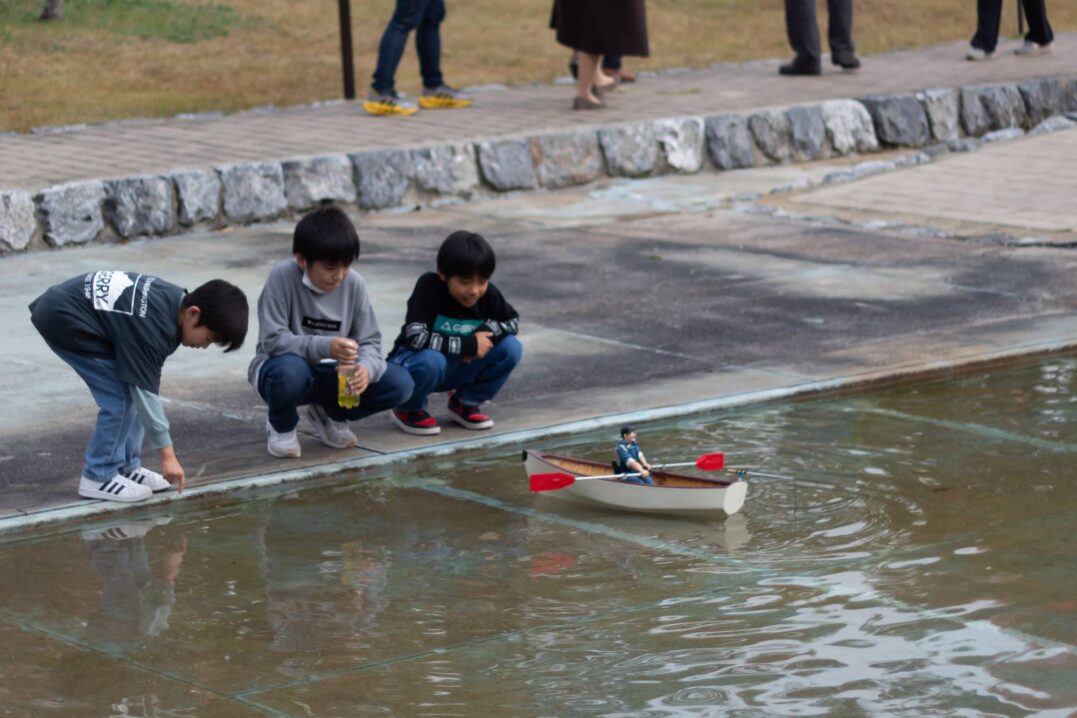
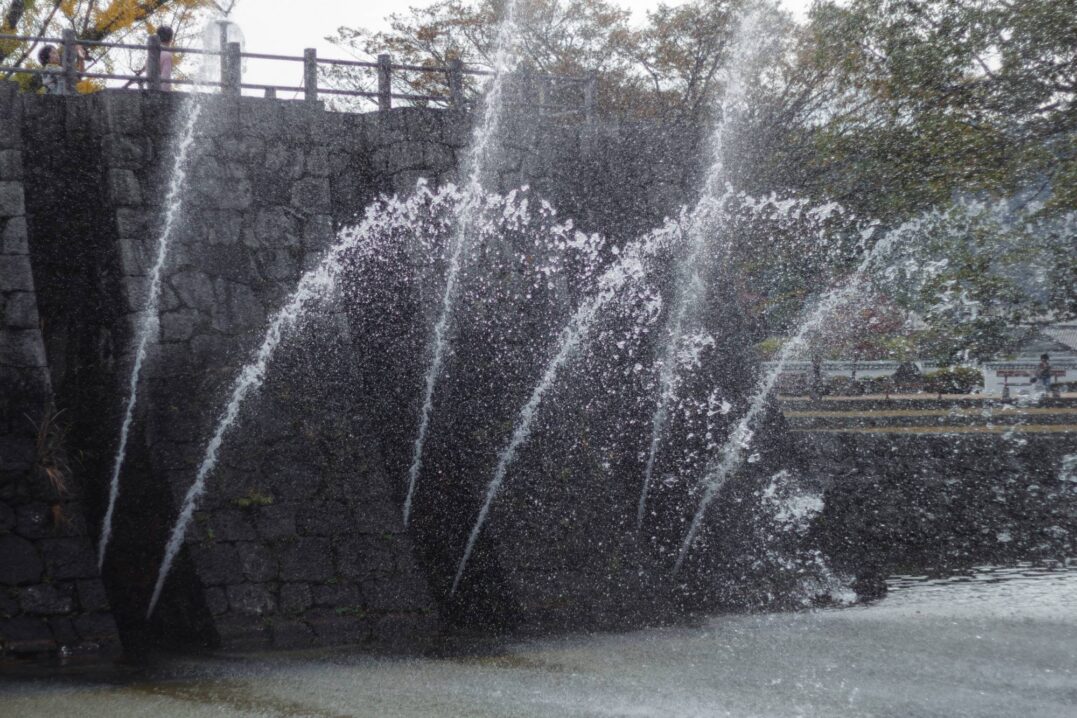
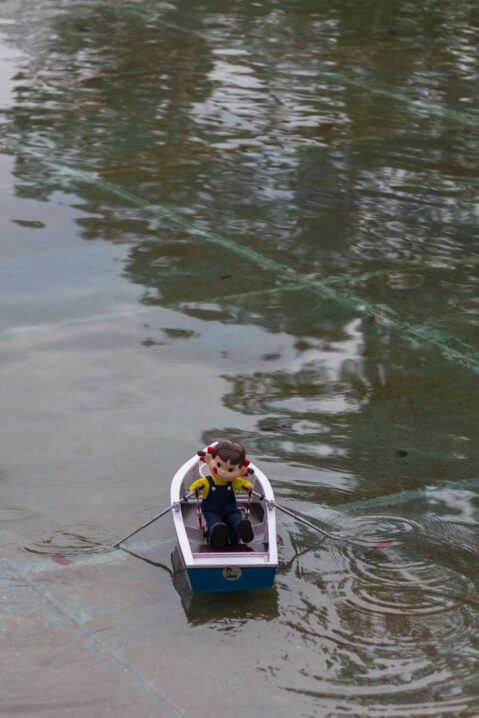
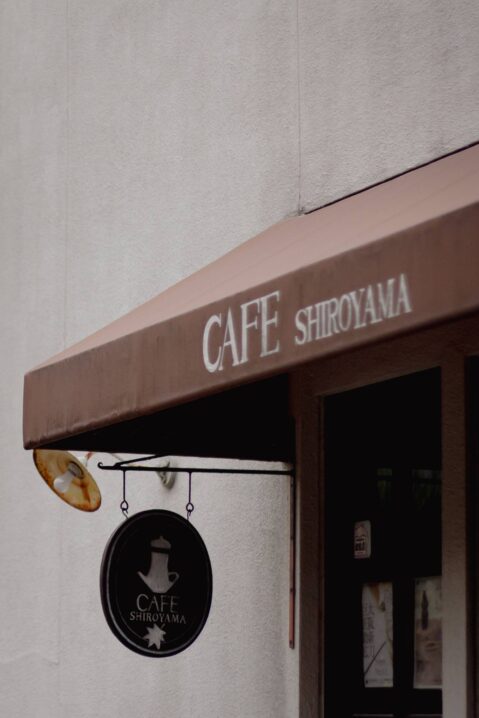
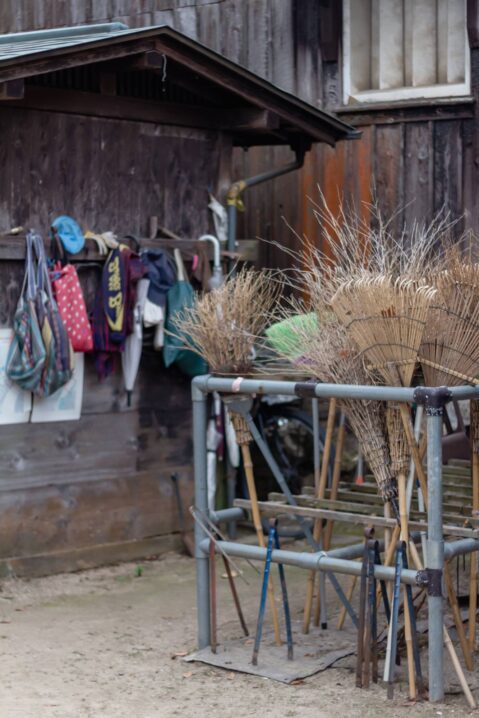
We turned down a side street and came across the cute-looking Café Shiroyama . The menu’s small, but the vibes are immaculate. There’s a tiny outdoor space, which we had all to ourselves, and both the curry and coffee were delicious. You can shop, too, for antique teacups and accessories. Be sure to also check out the ghost map when you visit the restroom.
We decided to forgo dessert at the café in favor of some ice cream and headed back to the shops we had seen after crossing the bridge. In Japan, soft serve is called “soft cream” and comes in a variety of unique flavors, from sweet potato to wasabi. We got a menu from Shokujidokoro Musashi and perused the options while waiting in line. In the end, Pete went for Black Sesame and I tried Blue Lychee. Both were delicious.
We did another loop around the park while munching on our ice cream, and stumbled upon a statue of Sakai Kojiro. Also known as Ganryu, this samurai invented the sword-fighting technique known as “Turning Swallows Cut” or tsubame gaeshi. According to legend, the move was inspired by the motion of a swallow’s tail during flight, as Kojiro often observed on Kaintaikyo Bridge. The statue depicts him getting ready to perform the lightning-fast move.
After our ice creams were done, we slowly made our way back to the bus station. We crossed the Nishiki River using the Kinjo Bridge this time. It’s a great spot to get photos while also avoiding the crowds. We then followed the river all the way back down to where we had begun the day, getting one last look at Kintaikyo before setting off back into town.
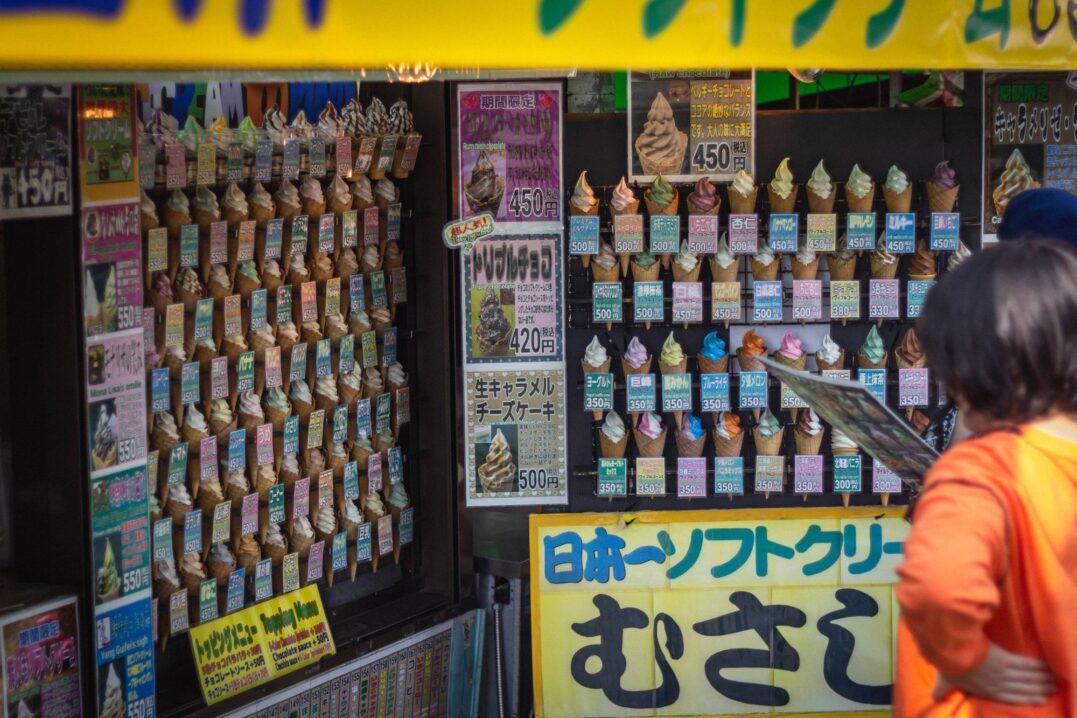
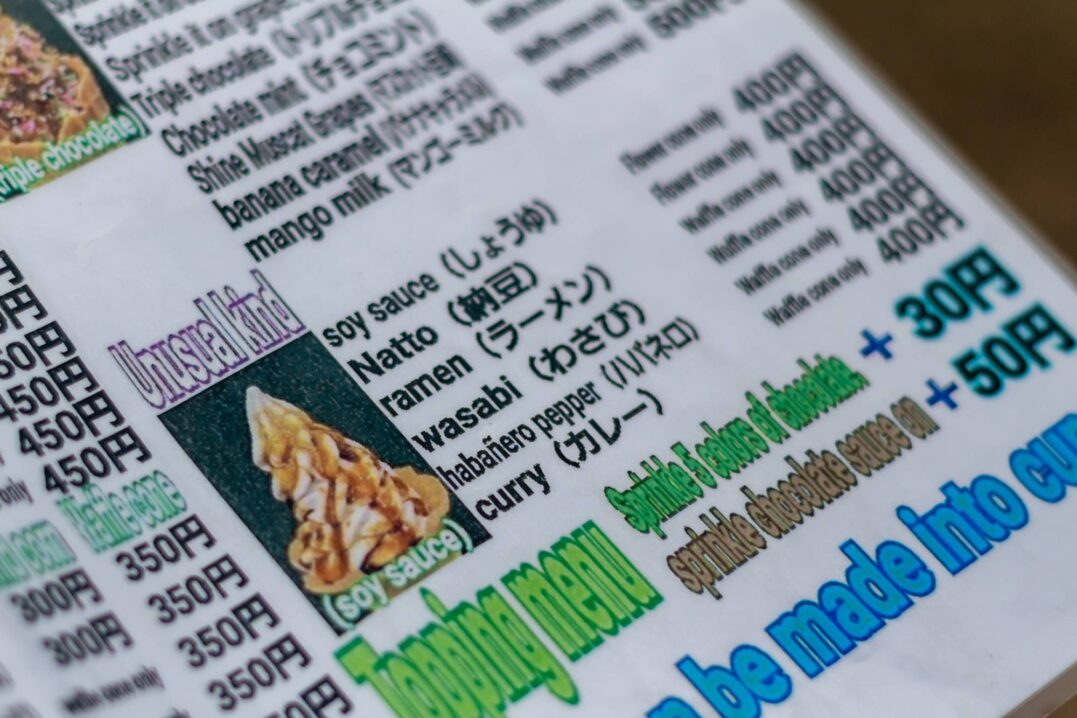
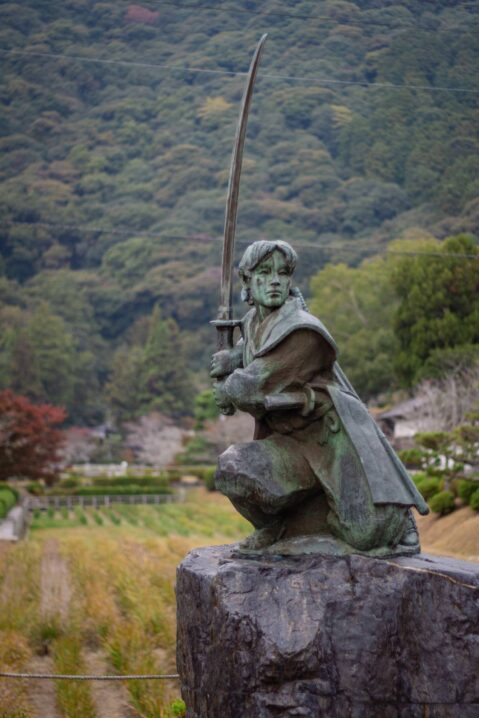
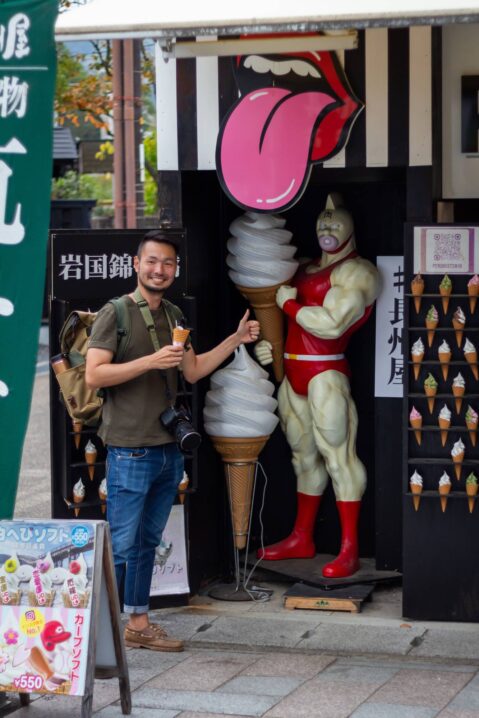
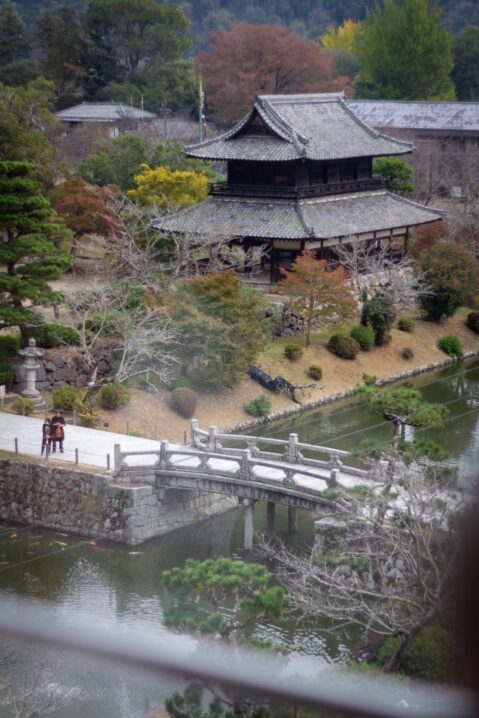
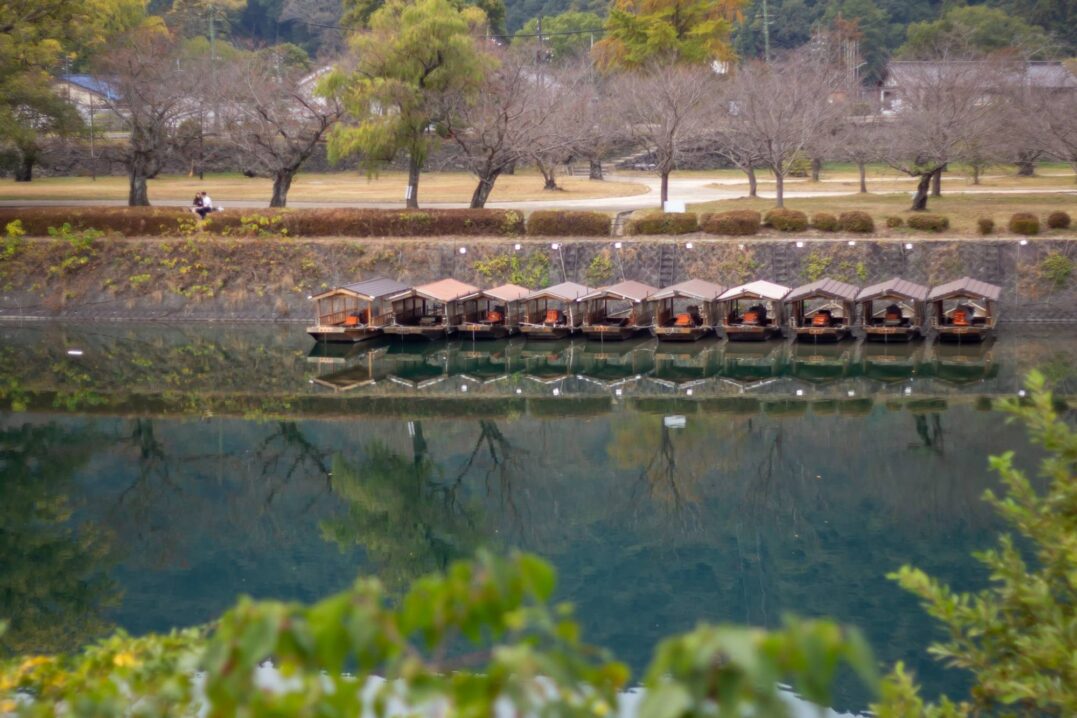
Visit Kikko Park
Kikko Park is easy to get to from Iwakuni Station. Simply take any bus headed for Kintaikyo Bridge and get off at the Kintaikyo stop. The trip takes about 20 minutes and costs roughly 300円,.
Admission: Free
Hours: 24/7
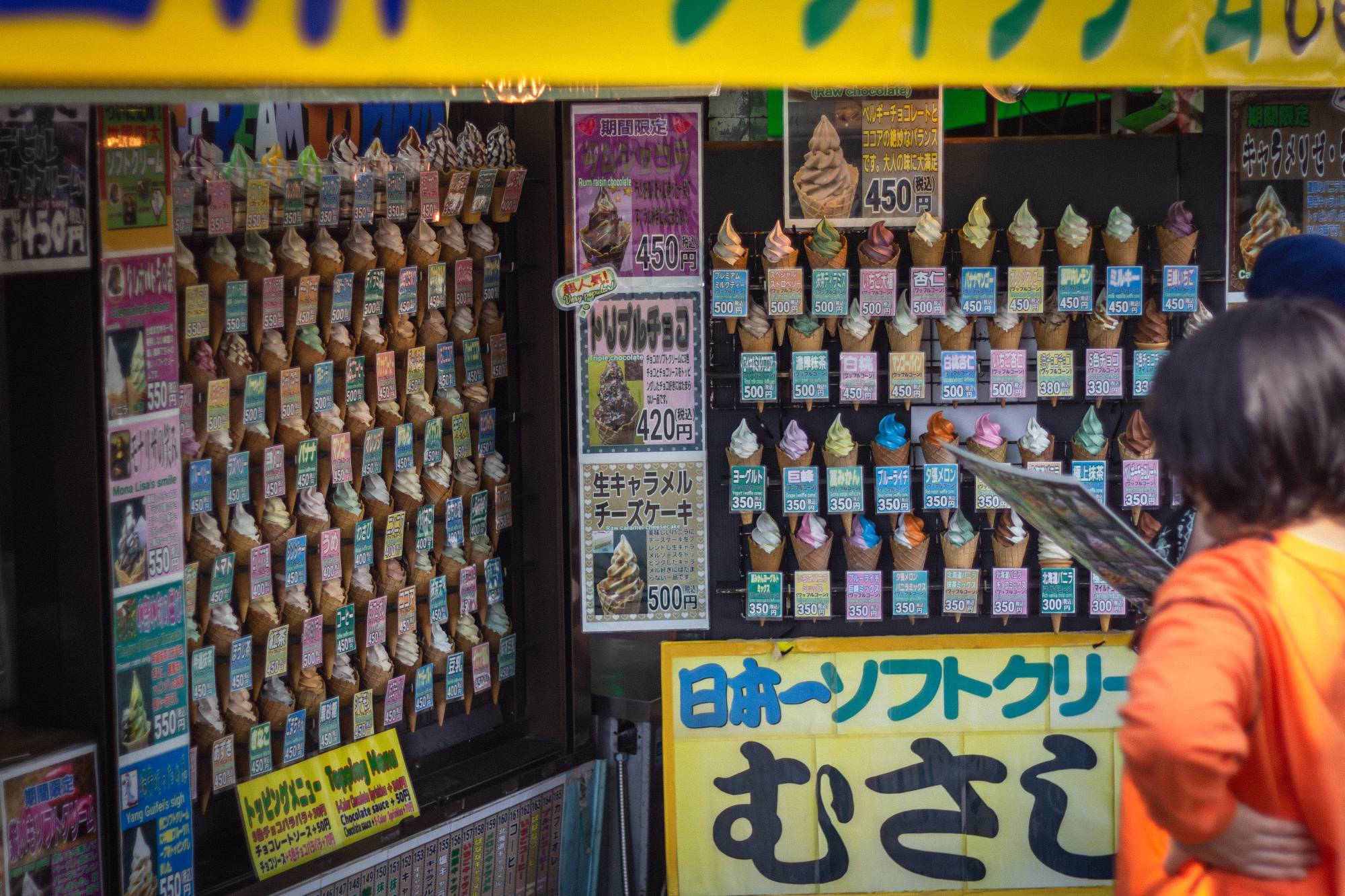
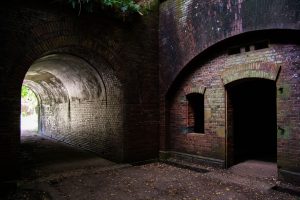
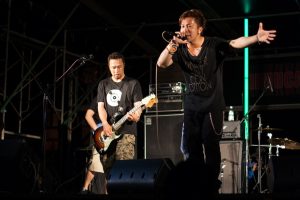
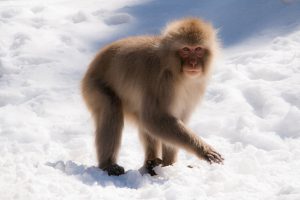
1 Comment
Join the discussion and tell us your opinion.
Interesting. The ice cream sounds yummy